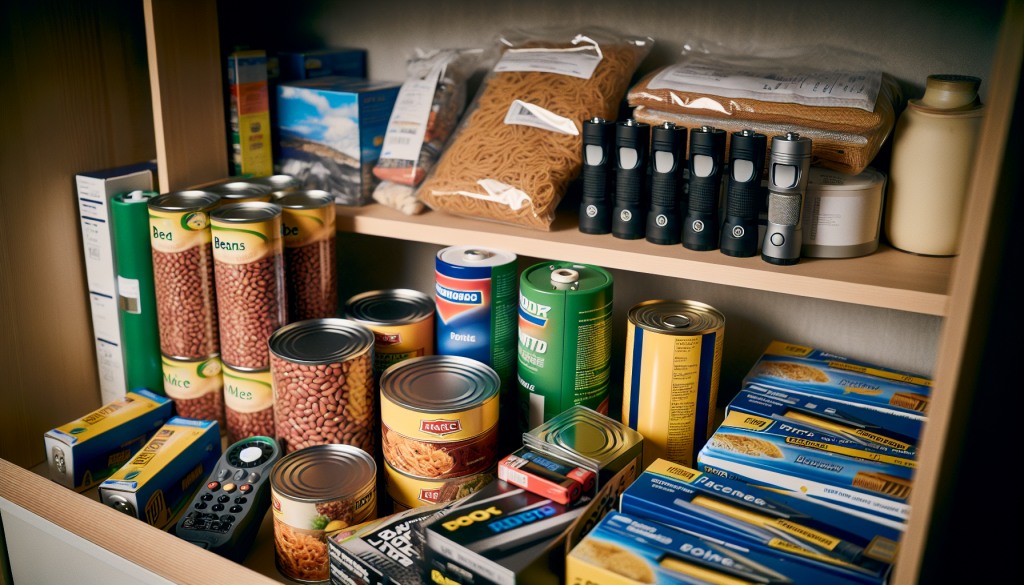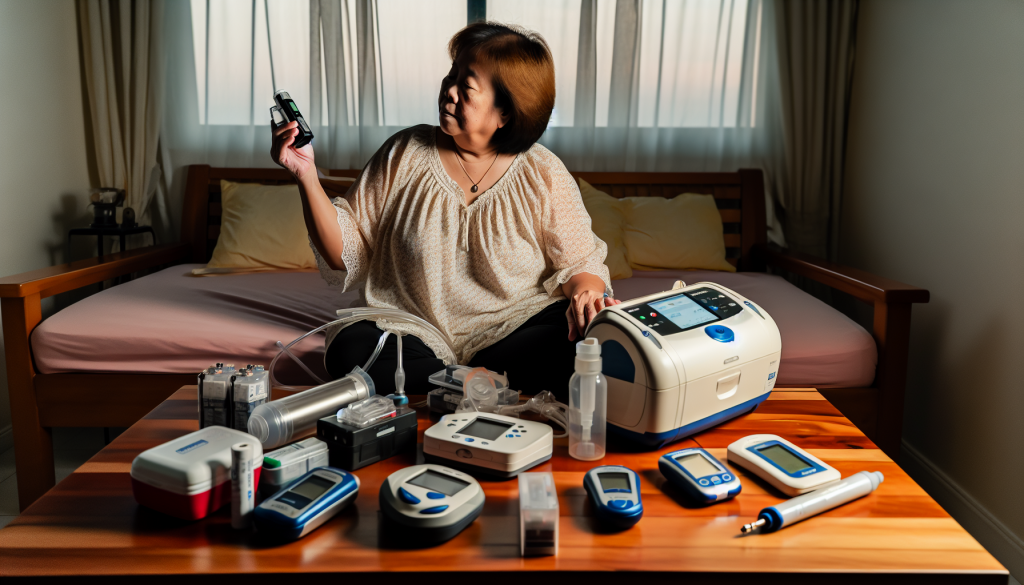15 Tips To Prepare For A Blackout Or Power Cut
How do you prepare for blackouts? Practical readiness ensures minimal disruption to your life when power cuts strike. Our guide outlines essential tips, from stocking up on critical supplies to maintaining communication and warmth. Follow these steps to build your blackout readiness quickly and efficiently.
Key Takeaways
- Power cuts in the UK can be planned or unplanned, and preparations are crucial for managing prolonged blackouts, as detailed in the government’s Programme Yarrow.
- Key emergency supplies include non-perishable foods, battery packs, LED lanterns, and a battery-powered radio. It’s also important to keep communication lines open and have a stock of spare batteries for devices.
- Home preparations should focus on energy conservation, maintaining warmth and food safety, having a backup power solution, and developing an emergency plan that accounts for health, transportation, and mobility considerations.
Understanding Blackouts and Power Cuts

In the UK, power cuts and outages are used interchangeably to represent a loss of electricity supply. These can occur for several reasons.
- Unplanned power cuts are often the result of unforeseen circumstances such as extreme weather.
- Planned power cuts are scheduled by the local distribution network operator for essential maintenance.
- Sometimes, emergency planned power cuts, or rota load disconnections, are implemented when the electricity demand outstrips the supply, a measure taken to protect the integrity of the electricity system.
However, power cuts are not always due to natural disasters or system overloads. They can also result from rising gas prices, international events, or a lack of governmental preparation. Whilst blackouts in the UK during winter are considered unlikely, the risk is heightened due to the National Grid’s warning about the need for a potential few hours of planned blackouts and a lack of gas storage, which could lead to a power failure. In such situations, UK power networks play a crucial role in maintaining the stability of the energy supply.
Preparation in these situations can be a lifeline. The UK government’s worst-case scenario plan, Programme Yarrow, outlines a seven-day contingency for sustaining key services during extended blackouts. By preparing for such scenarios, we ensure that we are not caught off-guard, making it easier to manage the situation for ourselves and our families.
Essential Items to Stock Up On

1. Emergency Kit
Assemble an emergency kit that includes essential items such as flashlights, batteries, candles, matches, a first aid kit, and a battery-powered radio. To enhance your preparedness, consider adding additional items like a whistle for signalling for help, a multipurpose tool or Swiss Army knife, and local maps in case you need to navigate without GPS. It’s also wise to include personal hygiene products such as hand sanitiser, wet wipes, and garbage bags for sanitation purposes. For those with specific medical needs, include a spare supply of prescription medications, hearing aid batteries, or glasses. Don’t forget to pack a manual can opener to access canned food without power and a stash of cash in small denominations, as ATMs and card machines may not be operational during a power outage.
2. Battery-Powered Lights
Lighting is one of the first things we miss during a power cut. LED lanterns such as:
- LE Camping Lantern with the light switched on
- Etekcity lantern
- AYL’s lantern
- Collapsible Lepro Camping Lights
They offer reliable illumination during power outages. These lanterns come with versatile features, including high-lumen outputs, dimmable modes for warm or daylight settings, magnetic bases for attachment, and even some with SOS signalling capabilities.
Regular checks on the working condition of these torches and lanterns, positioning them in easily identifiable locations, and maintaining a stock of spare batteries can be beneficial. Candles may seem like a romantic alternative, but they come with significant risks, including fire hazards and carbon monoxide poisoning from unattended flames. Therefore, using torches is recommended during a power cut.
3. Power Banks
Network operators and energy suppliers may provide generators to customers who are medically dependent on electricity in certain situations. This helps ensure that these customers have access to power even during outages. It’s also essential to verify the backup battery life of personal alarm systems and ensure they are charged.
Charge power banks for your mobile devices in advance, ensuring you have a backup power source for communication. This simple step can be a game-changer, as having your phone or tablet charged can keep you connected with family, friends, and emergency services. It also allows you to stay updated with the latest news and information, which is crucial during a blackout. Make sure to regularly check the charge levels of your power banks and recharge them as part of your routine preparedness activities.
Home Preparation Strategies

4. Food Safety First
In the event of a power cut, having a stockpile of long-lasting food and bottled water is equally crucial. Here are some non-perishable food items that are perfect for emergencies:
- Tinned fruits, vegetables, beans, soups
- Canned meat like tuna and chicken
- Staples like rice, pasta, grains
- Freeze-dried meals
These food items provide essential nutrients and have long shelf lives, making them ideal for emergencies. They can be stored for long periods and prepared with minimal resources.
Nutrient-dense snacks like cereal bars, crackers, and chocolate offer a quick energy source and are easy to store and consume during a power cut. Remember to rotate your emergency food supply to keep the stock fresh and safe and replace consumed items promptly.
5. Unplug Appliances
Unplug electronic devices and appliances before a predicted power cut to protect them from potential power surges when the electricity is restored. This simple yet crucial step can prevent damage to sensitive electronics such as computers, televisions, and kitchen appliances. Surges can occur when power returns with a spike in voltage, which can fry circuits or severely damage the internal components of even your router devices. By disconnecting them from the power source, you’re safeguarding your gadgets and avoiding the cost and inconvenience of repairs or replacements. Additionally, consider using surge protectors for an added layer of defence against unexpected surges at any time.
6. Portable Charger for Vehicles
If you have a car, consider having a portable charger to power small devices or provide a source of light if needed. This portable charger, also known as a power bank for cars, can be a real lifesaver in emergencies. Not only does it allow you to keep your phone and other small electronics charged, but it can also be used to power a small lamp or charge extra batteries up for your flashlights and radios. In a pinch, some models can even jump-start your car, adding an extra layer of security if you find yourself with a dead battery during a blackout. It’s a versatile tool that can provide both convenience and peace of mind during uncertain times.
7. Learn How to Manually Open Garage Doors
Familiarise yourself with the manual operation of your garage door if it is electrically operated. This knowledge can be invaluable in an emergency when you need to access or secure your vehicle quickly without power. Understanding how to engage the manual release and operate the door by hand can save you time and prevent you from being stuck either inside or outside your garage. It’s a simple yet crucial aspect of being prepared for a power cut, and practising this operation is recommended to ensure you’re ready when the need arises.
8. Emergency Exit Routes
Be familiar with emergency exit routes from your home, especially in the dark, and have a flashlight available for safe movement. It’s important to practice these routes with all members of your household, ensuring that even in the absence of visibility, each person can navigate safely and confidently to an exit. Consider marking exit paths with glow-in-the-dark tape or signs that can be easily seen in low-light conditions. Additionally, keep a flashlight in an accessible location, ideally one for each family member, so that everyone can move securely and swiftly in case of an urgent evacuation during a blackout.
9. Generator Preparation
If you have a backup generator, ensure it is in good working condition, and you have enough fuel to last through a potential outage. Regular maintenance checks are vital, including inspecting the oil and filter changes, testing the generator under load conditions, and ensuring all connections are secure. This proactive approach not only extends the lifespan of your generator but also guarantees that it will function efficiently when you need it most. Additionally, acquaint yourself with the operation manual so that in the event of a blackout, you can get your generator up and running swiftly and safely. Storing an adequate amount of fuel in a safe, accessible place is equally important, as it will prevent last-minute scrambles during an unexpected power cut. Remember to check the local regulations regarding the storage of fuel to ensure compliance with safety standards.
10. Entertainment and Activities
Have board games, books, or other non-electronic entertainment options available to pass the time. These activities not only serve to keep you and your family entertained during a blackout but also help to reduce the reliance on electronic devices that consume precious battery life. Engaging in board games can foster a sense of camaraderie and provide a fun way to connect with others without the distraction of screens. Books offer a peaceful retreat and allow your imagination to soar, which can be particularly comforting during the stress of a power cut. Additionally, puzzles, playing cards, and creative arts and crafts should be considered to keep all ages occupied and to encourage creativity and problem-solving in a technology-free environment.
11. Communication Plan
Establish a communication plan with family members or neighbours to stay informed about the situation and share updates. This plan should include identifying primary and secondary forms of communication, such as text messages, phone calls, or even a physical meeting place in case the network is down. It’s crucial to ensure that everyone knows what to do, who to contact, and where to go if separated. In addition, you can designate someone outside of the affected area to serve as a central point of contact for everyone to check in with, ensuring that all members are accounted for and can relay messages. Regularly reviewing and practising the communication plan can help to iron out any issues and make sure that in the event of a power cut, everyone can stay connected and informed.
12. Keep Warm
Beyond stocking necessary items and ensuring communication, additional home preparations can enhance comfort during a power cut. Draught-proof windows and doors are a good starting point to prevent heat loss. You can also select a well-insulated, upstairs room as a designated warm area, keeping the doors closed to retain heat.
Have blankets and warm clothing readily available to stay warm during colder months, as heating systems may be affected. You can also utilize natural sunlight by opening blinds during the day for warmth and maintaining a properly functioning fireplace while being cautious of carbon monoxide risks.
Health and Mobility Considerations

13. Registering for Priority Services
Registering for the Priority Services Register can benefit those likely to require additional support during a power cut. Eligible individuals include those who:
- have reached state pension age
- are disabled
- have a long-term medical condition
- are pregnant
- have young children
- rely on medical equipment that requires a power supply
You can register by contacting your energy supplier or network operator. They will need your contact details and information about your needs.
Once registered, you may receive advanced notice of scheduled power cuts, priority support in emergencies, and priority when calling your network operator. Additional support can include a password scheme for identification, a nominee scheme for communication, assistance with energy bills, prepayment meter access, and regular meter reading services.
So, if you or someone in your household is likely to need extra support during a winter blackout or power cut, do consider signing up for Priority Services.
14. Know Emergency Numbers
Keep a list of emergency contact numbers, including the local utility company, emergency services, and relevant authorities. It’s essential to have these numbers readily accessible, not just saved on your mobile devices but also written down or printed out, as power outages can render electronic devices unusable if they run out of battery. In addition to these critical emergency contacts above, consider including the numbers of nearby relatives, your insurance provider, and a trusted neighbour who can assist in case of an emergency. This list should be kept in a consistent, secure, and memorable place so that anyone in your household can find it quickly during a power cut.
Staying Informed and Proactive
During a power cut, it is vital to stay informed and proactive. The Demand Flexibility Service (DFS), for instance, pays homes and businesses to reduce electricity usage during peak times, contributing to grid stability. Interested parties can navigate the registration process detailed by the National Grid ESO to engage with the DFS. Updates and information on live and test DFS events can be accessed through the DFS Data Portal.
In addition to the DFS, households can use the National Grid WhenToPlugIn app to identify when the grid is most green, helping to choose the best times for electricity use. Consider enrolling in time-of-use tariffs to benefit from cheaper and greener electricity during off-peak hours.
15. Community Resources
Inquire about community resources, such as local emergency shelters or designated gathering places, where you can seek assistance if needed. Additionally, it’s wise to familiarise yourself with the locations and contact information of these resources in advance. This way, in the event of a blackout, you will know exactly where to go for help or to access essential services. Many communities have arrangements with local schools, community centres, and churches to serve as temporary shelters or resource distribution centres during emergencies. Establishing a connection with community leaders and participating in local emergency preparedness meetings can also provide valuable insights into the resources available to you during a power cut.
Summary
From understanding the causes of blackouts to investing in backup power solutions, we’ve explored a range of strategies to prepare for a power cut. The key takeaway is that preparation is crucial. Stock up on essential items, prepare your home, consider health and mobility issues, ensure transportation accessibility, maintain comfort and safety, conserve energy, develop an emergency plan, and stay informed.
Being prepared for a power cut not only ensures your safety and comfort but also empowers you to help others. So, let’s take these steps forward, illuminate our paths during power cuts, and empower ourselves and our communities. Because when the lights go out, our resilience shines brightest.
Frequently Asked Questions














